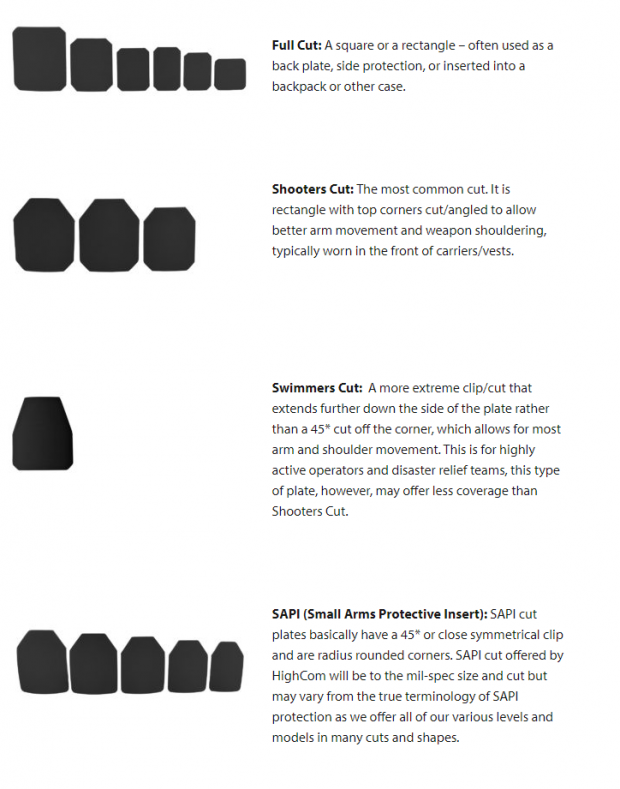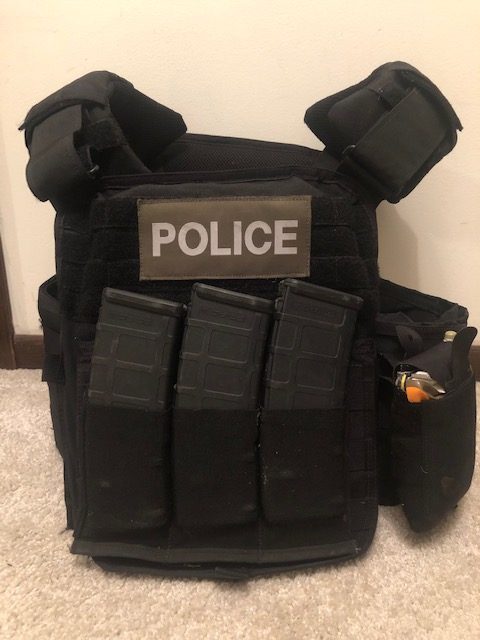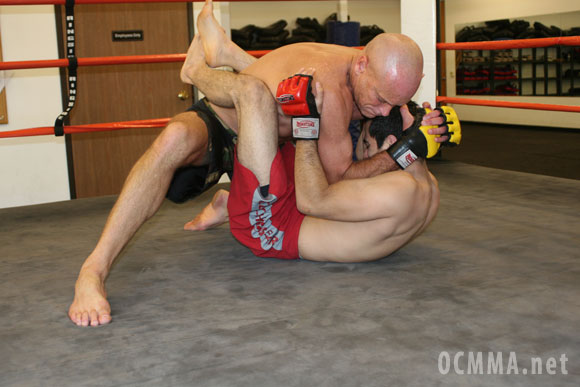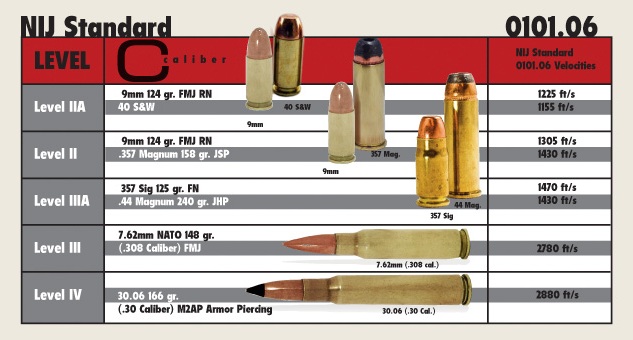Written by: Greg Ellifritz
People are getting worried. In response to the recent high-profile mass shootings, lots of legislators are hinting about restricting the sale of body armor to private citizens. Obviously, that will do nothing to prevent an active killer attack but they feel pressed to “do something.”
With restrictions possibly forthcoming, I’ve fielded so many questions on the topic that I realized I had to write an article on the topic. I took all the body armor questions I’ve been asked in the last couple weeks and answered them as thoroughly as possible. If you are worried about future restrictions and want to buy armor now, this article will be an excellent reference for you.
I’m guessing that most of you reading this either don’t currently own any body armor or you think your current body armor selection may be inadequate for the coming troubles. If so, I think this is a hole in your self defense preparations. If you acknowledge the possibility that you might get into a gunfight, you should be thinking about protecting yourself as well. Body armor will save your life.
If you are a prepper or anticipating some type of economic or societal collapse, I think that a ballistic vest will likely be a better investment than yet another case of ammunition. You won’t be able to fire that ammo or eat all that stored food if you get shot and die because you didn’t have body armor.
Personally, I think armor is so important, that I have a couple sets under the bed in my “safe room” right next to the long gun I will use for home protection. If you have enough time to grab your rifle when an intruder breaks into your house, you also likely have enough time to throw a vest over your chest. I believe it’s a sensible and necessary piece of equipment for any home defense plans. It’s also going to be useful if you have to venture out of your house during periods of social unrest.
Let’s dig into some specifics.
Hard or Soft Armor?
There are two basic classes of body armor. The first is known as “soft body armor” and is what most cops wear under their uniform shirts. This armor is reasonably light and flexible and made of synthetic materials like Kevlar and Spectra Shield. This type of armor is classified by threat level (the type of bullets they protect against). Current NIJ threat levels are (in order from least protection to most protection) Level IIA, Level II, and Level IIIA.
These vests stop pistol and shotgun rounds reliably, but they generally won’t stop centerfire rifle rounds. It’s a velocity issue. The faster the bullet, the harder it is to stop. Most level IIIA vests have a velocity threshold somewhere around 1700 feet per second. If a bullet traveling faster than that hits the soft armor, it usually penetrates.
In order to stop rifle rounds, you’ll need “hard” or “plate” armor. This armor is made of ceramic, a solid composite material, or steel. It is rated with the NIJ classifications of Level III and Level IV. See the chart below from Howard’s Uniform Supply to see the particulars for each type of armor
If cost isn’t the primary concern, I would recommend that your first purchase be a concealable soft armor vest in level II or level IIIA. By far the most common threats citizens face are handguns. The soft armor will protect you from those threats very well.
I like the fact that it is concealable as well. When worn under a sweatshirt or coat, no one will know you are armored. That might provide you with a critical advantage. If you walk around wearing an exterior plate carrier, serious opponents will simply shoot you in the head or pelvis. If the bad guy doesn’t know you are armored, he may waste his first shots at your torso, buying you time to get your gun into action.
The concealable body armor is also harder to defeat at extreme close range than an external plate carrier. In a contact distance fight, an attacker can pull your plate carrier away from your body and slide a handgun underneath the plates and into your belly or chest. That move is very difficult to pull off with someone wearing a concealed vest with a tucked in cover garment.
You also want to stay as low profile as possible. Concealed armor offers you advantages in this realm that you don’t get when wearing an external plate carrier. People will notice you if you show up at a protest in a plate carrier. The dude who shows up wearing concealed body armor and a hoody repping his favorite college football team doesn’t generate a second glance.
Concealed body armor additionally covers more body area than plate armor. The vest wraps around the torso and protects the sides of the body. Hard plates only protect front and back (unless you purchase very uncomfortable side plates as well.
The downsides of soft armor are that it doesn’t not stop rifle rounds and that it is approximately twice the cost ($500-$1200) of cheap steel plates.
If I was buying another set of soft body armor, I would purchase it from either Point Blank (I like the Vision), Safariland (the Extreme) or US Armor (the Enforcer). I’ve personally worn and shot all three of those models and can attest to their quality and durability.
What Kind of Plate Armor should I get?
This is the topic that seems to be the most contentious. There are essentially three types. Steel is the cheapest, but it is very heavy and potentially not as protective.
Many of you have shot AR-500 steel targets before. The body armor is essentially the same product. A lot of steel body armor is rated at level III or III+. Those panels may be penetrated by 62 grain “Green tip” 5.56 mm rounds or 55 grain FMJ when shot out of a 20″ barrel. Those are common loads in the USA right now and I would want protection from them.
The other issue with steel is “spalling.” When you shoot on steel targets, the bullet breaks up and fragments of lead and jacket are distributed in a 360 degree angle from the point of impact. The same thing happens when shooting a steel body armor panel. You may be saved from the bullet penetration, but killed from a piece of spall that enters your throat. There are various coatings (similar to truck bed liner) that can be applied to reduce spalling.
Those of you who shoot steel targets know that the industry safety standards instruct that you never fire a centerfire rifle at the plates at closer than 50 meters. The dangers of penetration or spalling are high at close range. What do you think is happening when you are shot at in the street? There’s a good chance that your attacker may be closer than 50 meters and your steel plates may not protect you.
Combine the heavy weight with the risk of penetration and spalling and I don’t like the steel body armor panels. With that said, catching a bit of spall is a much better option than taking a .223 bullet to the chest. If I couldn’t afford any other options, I’d rather wear steel plates than nothing at all.
On the other end of the spectrum are the ceramic multi-hit vests. They work very well and are very thin. They are heavier than the composite options and may crack if handled roughly. I have a set of early ceramic plates. I never wear them anymore. Between the high cost and the weight, I don’t think they are the best option for most people.
The happy medium seems to be the composite plates. These are lighter, but thicker than the ceramic and steel plates. I think they are most useful for the average person. I would choose the multi-hit capable level IV plates if you are going to buy them. They will offer you the most protection.
Many body armor manufacturers make these rifle plates. I’ve personally bought plates from Shellback Tactical and AT Armor. Both companies have sets of level IV plates for between $300 and $400 per set. Although I’ve never handled any of their products, friends I trust also recommend Shot Stop Body Armor for plates (and they also have a 30% off discount code if you’ve trained at the Alliance police facility.)
What plate cut should I get?
Full cut plates are squares or rectangles. They offer the most protection. SAPI cut, shooter’s cut, and swimmers’s cut each trim a bit off the top of the square to allow for better arm movement and easier mounting of long guns. Check out the description of the different cuts at Hi Co Armor.

Most people do best with the SAPI or Shooter’s cut plates. If you are very lean, the swimmer’s cut works best at a slight loss of protection. If you are really big, the square cut may be better.
For most people the single or multiple curve plate options are more comfortable to wear as compared to the standard flat plates.
What about a carrier?
If you want the best, I’d look at Crye, or HSGI. Mid level options are Grey Ghost Gear, Blue Force Gear, and Shellback Tactical. To be honest, the $50-$100 Condor plate carriers will probably be more than adequate for occasional use.
I like my carrier relatively slick. I run magazine carriers for three spare AR-15 magazines in the front. I have a medical kit and a dump pouch on the back/side. That’s it. I don’t like to burden my plate carrier with too much gear.

My personal plate carrier
Should my carrier have a security/police patch?
You’ll notice that my personal carrier has a “Police” patch on both the front and rear. Even though I’m no longer a cop, I kept my patches. If they prevent an on-duty cop from shooting me, I’ll deal with potential “impersonating an officer” charges later. If you don’t want the possibility of being charged with impersonating a peace officer, place some “security” patches on your plate carrier instead.
Anything that might cause a uniformed officer to slow down and better evaluate the situation is a good thing when you are running around with a rifle and plate carrier in the middle of a gunfight. I see no downsides to having these patches and a lot of potential benefits.
What about head protection?
Helmets are useful. There are ball caps available with soft armor inserts. The problem with them is the backface deformation trauma to the skull. Soft body armor catches bullets like a catcher’s mitt. It doesn’t allow penetration, but the inside of the armor is significantly dented. On a soft torso, a couple inches of backface trauma cause some bruising. On the skull, that same two inch deep dent may be fatal.
If I’m wearing head protection, it’s a hard helmet. These helmets aren’t generally rated to protect against rifle rounds, but will stop handgun and shotgun projectiles. I currently use a Shellback Tactical ACH cut IIIA helmet. I like being able to use electronic hearing protection with this particular model.
If electronic ears aren’t a requirement or you simply want more protection, go with the full size cut or even one of the surplus military PASGT helmets. I went through SWAT school and breaching instructor school with the PASGT. It’s a bit heavier, but absolutely adequate protection. I still have a couple of them in my armory for handouts in case of an emergency. If you go with the PASGT surplus helmet, invest in an updated suspension system. It will make life much more comfortable for you.
What about groin protection?
There are soft body armor extensions that attach to the bottom of your plate carrier to provide groin protection. I have some. I used to wear it, but I found it annoying when moving rapidly or changing positions. If you plan on sitting in a fixed position, the groin protection may be more useful, but I personally don’t like it flapping around when I’m running.
Does NIJ certification matter?
Probably. The testing certification doesn’t mean the armor is infallible, but it does show some dedication on the part of the manufacturer to submit the product to rigid government testing. I would prefer to wear body armor with NIJ certification more than armor made by those companies that don’t test their products to the NIJ standards.
Does the expiration date matter?
Most soft body armor has an expiration date approximately five years after its manufacture. The armor will slowly lose some of its protective abilities over time, but it won’t suddenly “go bad” at the magical five year mark. When I was the training officer at my department, I regularly shot old vests that our officers turned in once they got their newly issued armor. I never had a single vest fail to stop a round it was rated to protect against, regardless of age. I shot dozens of vests, some going back to the 1970s and never had a round penetrate.
With that said, almost all of the vests I shot were very old, but they’d only been actually worn daily for five to ten years. Daily wear for 20+ years may increase exposure to heat and moisture, which may reduce effectiveness.
Will used police body armor still work?
Heat, moisture, and UV light are body armor’s worst enemies. They will make a soft vest degrade more rapidly than it should. Be cautious about how you store your armor and purchase a moisture resistant carrier. Don’t buy used armor if you don’t know how it was stored. With that said, most police body armor worn for fewer than 10 years will still stop all the rounds it was originally rated against no matter what it’s chronological age may be.
Should I add a soft or hard “trauma plate” to my soft body armor?
Many soft vests come with an additional ballistic panel (either soft or hard) to better protect the heart from impact damage. You’ve probably seen news articles where kids hit in the chest with baseballs have heart attacks and die. The same thing can happen when your heart is impacted by a bullet. Even though it doesn’t penetrate, the impact can still cause heart arrhythmia. The trauma plate reduces the chance of that happening.
The downside is that if you are in a physical fight with an opponent and you end up on your back with your attacker straddling you (the “mount” position), his body weight will drive your vest high up under your chin. If your opponent cups the back of your head and drives your chin into your chest (the MMA “can opener” move), you will be choked unconscious on the top edge of the trauma plate in your own vest.

This type of an attack, especially if your opponent is straddling you, can cause you to be choked out by hard armor or a trauma plate
It is for that reason that I don’t wear the supplemental steel “trauma plate” often included with soft armor. It makes it too easy for a skilled opponent to choke you. There’s no way to avoid this problem with the hard armor plates. If I’m wearing my plates, I’m also probably carrying my rifle. Getting into a ground fight with a long gun presents many more problems than just being choked by my vest.
Will body armor protect me from a knife attack?
Although most soft armor isn’t rated to protect against edged weapons, it usually does a pretty good job. Soft armor will protect against all slashing attacks. It will stop many stabbing attacks as well. The only attacks that it won’t protect against are stabs from knives with a very thin profile (think “icepick”) or stabs when the wearer is stabilized against a wall or the ground. Even then, usually only a small amount of the blade (1/2″ or so) penetrates.
Is there special body armor for women?
I’m not aware of any particular hard body armor changes for women. Some soft body armor is adapted to the female body. When I was purchasing body armor for the police department, my female officers preferred the body armor from Survival Armor because it offered better contours for the female curves. My male officers universally preferred the Point Blank or Safariland options to the male Survival Armor cuts.
What’s your bottom line advice for the TL;DR crowd?
Think about buying some armor. I would recommend that you start out with concealable soft armor in Level II or Level IIIA. It will provide protection from almost all handgun and shotgun rounds and can still be low profile enough to be worn under a loose shirt. The soft armor also wraps around the body and provides more coverage than plate armor.
Once you get some soft armor, take a look at supplementing it with some plates. I generally don’t recommend the coated steel plates. Even with the rubber coating, there is a chance that a rifle round that hits the plate can break up, sending fragments into your throat. I’d only recommend the steel plates if money is a serious issue. Spalling from a rifle round that hits your steel plate is certainly more preferable to taking a full round in the chest. If you have some more disposable cash, the ceramic or composite plates are usually lighter and offer a little better protection with less chance of spalling.
When you get your armor, make sure you train in it. It WILL alter many of the things you do with your firearm. You should be aware of how that works before you actually wear your armor in combat.
FTC Disclosure- I am not being compensated in any way for these product endorsements. None of the links are affiliate links. These are my best recommendations, free from any financial arrangements.


